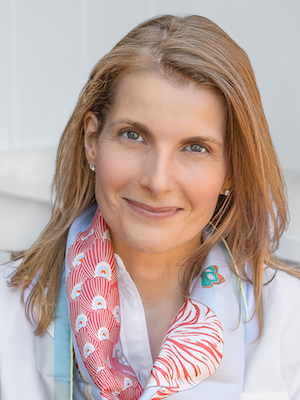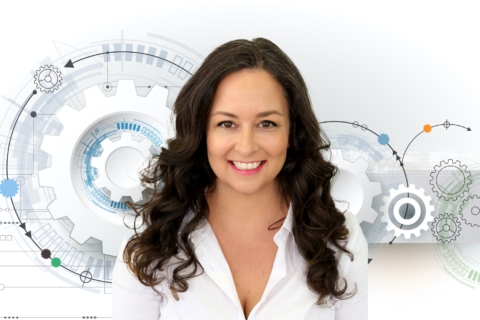Statistics suggest that only 14% of jobs lost during the pandemic have returned to the economy, many people have taken or are considering a bold leap into entrepreneurialism. While being self-employed requires a different skill and mindset, everyone has hidden resources they can draw on to create entrepreneurial success.

According to McKinsey & Company, automation will displace between 400 and 800 million jobs by 2030, requiring as many as 375 million people to switch job categories entirely.
Whether or not you go into business for yourself, your work will change. Zippia.com reports that 65% of Americans are looking for a new job today, and the average American worker changes jobs 12 times in their lifetime.
The key is not to find a path but to create it.
The signal here, amidst all the noise about artificial intelligence, employee disengagement, and the speed of change, is that an entrepreneurial mindset is an asset. Even if not entrepreneurially inclined, all workers can benefit from learning the skills and attitudes of reinvention that take a startup to success or pivot a career.
Through interviews with people who have reinvented themselves, four abilities of success became very clear:
Explore your purpose.
We come alive when we live our values, even if takes a while to get clear on what they are. For most people, our values and purpose reveal themselves over time, through reflection, experience, and open-mindedness. Your purpose is your entrepreneurial north star.
Grow through experimentation and learning.
We grow by taking risks and trying new things. Take small steps in new directions that inspire you or feel important. Pay attention to the things that interest you and make you come alive. Also, pay attention when it feels like something is not working, even if you’re not sure why.
Make pivotal decisions.
And build the courage to do so, even if you don’t have all the answers. You can start small, for example, volunteering in an area of interest or exploring what a different field of work might look like. Or you may decide to commit to graduate study, or change departments, or leave your job.
Work through challenges.
By committing to yourself, your values, your growth, and your belief in your new direction. When you know what you want to say “yes” to, it becomes easier to say “no” to the demands and distractions that can bog you down. Inevitably, you will meet challenges. Your ability to navigate uncertainty, trust your intuition, and build your confidence will be forged.
The thing to remember about reinvention is that it’s not a linear process, and we in the Western world have a very linear approach to education, work, and success.
Reinvention is a circuitous approach to linear progress.
What does that mean? Think about the decisions and circumstances that brought you to where you are today. Chances are, it’s not a straight line.
This is especially helpful to keep in mind when you’re feeling stuck or discouraged by setbacks. Or if you’re working a job and don’t see how you can take the leap to entrepreneurship.
Your life is your curriculum and your preparation.
Most of us have more experience and skill than we even realize.
When you doubt that, you can see it more clearly if you sketch out your life’s journey so far. Starting on the left side of the paper, note the high points along with the low points, and write one or two words of description with each.
Once you’ve completed your journey map, what themes do you see? What values do you see reflected in the high points? And low points? What did you learn about yourself during each of those low points and high points – and afterward?
Spoiler alert: we learn a whole lot more from the low points than we do in the high points.
The high points are usually the result of having experienced and made good decisions during the low points.
So, look at those low points and reframe them. What if setbacks and challenges happened for you instead of to you? What if these obstacles are opportunities for learning and growth? It is during those low points that your character, your values, your purpose, and “what’s next” become clearer.
Resilience is key to navigating uncertainty
If something in your life is not working the way you want it to, it will probably continue not to work unless you do something different about it.
There will always be factors beyond our control. But we can control our response. Is it a knee-jerk reaction or a considered response? Take a beat or two to absorb the situation and give yourself time to decide: What do I do next? What would my 85-year-old self thank me for doing?
Whether as an entrepreneur, an employee, or in between, keep checking in with yourself: Are you working the business/job, or is it working you? Who is in control? And adjust accordingly.
And, most importantly, be kind to yourself in the process. Kindness is the path to resilience; it provides space and freedom, and resilience is the path to success.
Developing your ability to reinvent is key. We will all navigate the uncertainty and upheaval of the future of work. As an entrepreneur, you will create that future of work – for yourself and others. Learn through your journey and make it a future that is meaningful, purposeful, and aligned with humanity’s potential.
Julie Jungalwala, Ed.M., Harvard Graduate School of Education, helps individuals and organizations reinvent their purpose and productivity in the workforce. Julie is co-founder and president of Academic Leadership Group, has served as a TEDx speaker, Harvard Division of Continuing Education instructor and author of “The Human Side of Changing Education.”
© YFS Magazine. All Rights Reserved. Copying prohibited. All material is protected by U.S. and international copyright laws. Unauthorized reproduction or distribution of this material is prohibited. Sharing of this material under Attribution-NonCommercial-NoDerivatives 4.0 International terms, listed here, is permitted.














